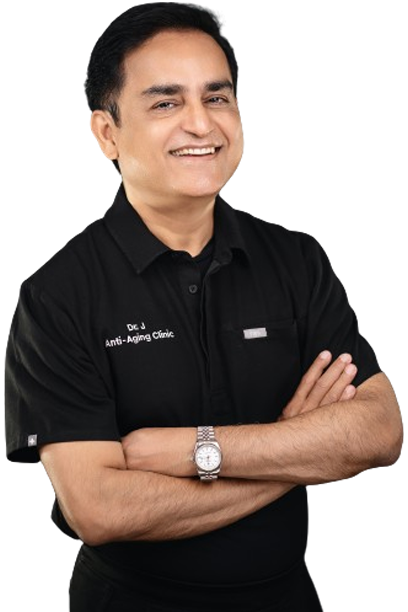Hair loss might be a distressing state of affairs for a lot of people, it might has a committal influence on some people’s self confidence However, it should be noted that there have been positive developments in medical sphere, which have made available some effective solutions, amongst which is hair transplantation bringing hope to those who can no longer keep their hair. But faced with the numerous types of hair transplantation techniques, it is nothing but beating about the bush. This comprehensive guide, you will see what hair transplant methods is all about and also their pros, cons and how it can positively and negatively affect you.
1. Platelet-Rich Plasma (PRP)
Process Of PRP
In the PRP dealing, blood is taken from the patient, usually from the arm, and then is centrifuged to obtain the plasma containing the muster of platelets and growth factors. Lastly, the blood is spun in a centrifuge after which the concentrated platelet-rich plasma (PRP) is extracted from all the other components. This obtained PRP can be injected inside the scalp into the places which are experiencing the hair loss issues. This is believed to be attributed to the growth factors which are present in the PRP, which in turn stimulates the hair follicles , promotes hair growth, and improves overall hair density.

Benefits:
- Non-surgical procedure: PRP hair transplant is a minimally trimmed treatment which doesn’t require straining/sutures making it accessible by individuals with non-surgical choice of hair restoration.
- Natural hair growth: PRP contains growth factors that help wake up the dormant follicles and guide those to grow, develop and the indicant of existing hair.
- Safe and well-tolerated: Patients can rest assured that their own blood is used during the procedure, thus minimizing the chance for allergy reactions or adverse side effects; which is a warm safety blanket for them.
- Quick procedure with little to no downtime: Unlike an ordinary hair transplant sessions where cells extracted from the patient’s own body are infused into the scalp, a PRP hair transplant session often lasts between 30 minutes to an hour. Furthermore, patients can go back to their normal activities immediately after and without much discomfort or downtime.
Considerations:
- Multiple sessions may be required: Despite the fact that some fortunate people experience a dramatic improvement after a single session of PRP. It’s usually the case that most of the people need multiple procedures which follows a few-weeks gap between them to get the best possible result. Thus, the probability of overall cost induced and time consumed during this method increases.
- Results may vary: The efficiency of PRP hair transplant put the most effective results in treating hair loss among individuals don’t mean the same and not every one of them could benefit from the procedure greatly. Things like age, putrifying co-occurring illness, and the extent of hair loss determine the result.
- Maintenance is necessary Regular maintenance check-ups may be needed at certain intervals to uphold. The results of the presented PRP root transplant. The main malady braids about the inability of the individual to comply with the maintenance regime may bring the gradual loss or thinning of hair.
2. Botox hair restoration (Botox)
Procedure:
In the words of botox hair restoration (Botox for hair), it is the procedure of taking botulinum toxin injections for cure of hair loss and improving hair growth. At the implement, repeated injection in the scalp to the area of scalp thinning or distress from the scalp are given only small doses. The substance stops the special chemicals transmission in the scalp, which makes the muscles to stiffen and takes the strain of the pilum roots. This effect may result in the increase of blood flow that goes to the scalp, and then likes hair follicle health and stimulates hair growth.
Benefits
- Stimulates hair growth: The usage of Botox injections enhance follicles stimulation and thus, one experiences better blood supply to the scalp & shrinkage of hair tissues. Therefore, thicker and healthier hair will grow.
- Non-surgical and minimally invasive: Botox hair restoration is a non surgical procedure that includes injections of the scalp. So, it is an alternative for physically weak or elderly people who would also seek to avoid surgery.
- Safe and well-tolerated: Usage of Botox injections is usually seen as safe when performed by the appropriately trained and experienced medical practitioner. Generally painless, adverse reactions, as a rule, are only mild and of a temporary nature, mostly related to the injection spot (e.g. bruising or discomfort).
- Can improve scalp health: Alongside increasing hair growth, scalp treatments with botox also provide anti-inflammatory and sebum reduction that may prevent the occurrence of dandruff and seborrheic dermatitis.

Considerations:
- Results may take time: It is possible to expect that the time to see the noticeable results coming from Botox hair restoration is about from 1 up to 3 months, due to fact that growth of hair is a slow process. It is likeable to think in terms of multiple sessions or even whole courses of treatments, tailored to individual needs.
- Temporary effects: Botox will not stay in the body forever. It has to be injected every few months. To keep the positive effectiveness of hair growth achieved, the individuals may count on periodic maintenance of their hair growth.
- Limited effectiveness: Botox hair growth transfer may not be the right method for each type of hair loss or advanced hair loss cases. This device is in its prime comfort and efficacious of individuals having mild to moderate hair thinning, or those just seeking to improve the general quality of their hair.
3. Follicular Unit Transplantation (FUT)
Process Of (FUT)
FUT or rather strip harvesting is a medical process that entails making an incision in the scalp, and cutting out a strip of the scalp in the donor region mostly back and sides. Then follicular units are individually cut off from the strip, which are later transplanted to the recipient area.
Benefits:
- Supports the harvesting of many grafts in one session temporarily which means the patient can avoid further invasive surgeries.
- Helps to address the needs of men and women with very thinning or no hair on their scalp.
- Leads to little remain after the operation, should be performed by a professional doctor.
Considerations:
- It forms a narrow line along the scarotic zone.
- A lengthened recovery period than other types of treatment.
- Maybe call for stitching and even a longer period of healing.
4. Follicular Unit Extraction (FUE)
Process Of (FUE)
By taking out hair follicular units one by one from the donor area with the aid of a little punch machine, FUE is done. These grafts are then “in-planted” into the recipient area by employing the method of micro incisions.
Benefits:
- Dodging the a priori linear scarring, which is a hallmark of invasive procedures.
- Much shorter rehabilitation period than what FUT provides.
- Great for those who like shorter haircuts in a choppy form.
Considerations:
- Restricted to the number of the grasses that are able to be gathered at a time.
- Another con of the DIT is probably the longer time required and higher cost as compared with the FUT.
- The surgery involves the small, and tedious movements of the cervix or uterus, with close attention to detail being required on the part of the surgeon.
5. Process Of Exosome Therapy
When restoring hair through exosome therapy, exosomes. Which are among the extracellular vesicles of stem cells. Play a critical role in increasing hair growth and transforming the follicles. These exosomes are filled with growth factors and cytokines that contain essential components, which are signal molecules therefore play the leading roles in tissue repair or regeneration. Exosomes are either given as an injection directly into the scalp in the regions where hair is thinner or where there is obviously more hair loss during the process.
Benefits:
- Stimulates hair growth: Exosomes carry growth factors and signaling molecules that produce an active effect on the inactive hair follicles. Promote hair growth and enlarge scalp hair density.
- Non-surgical and minimally invasive: Exosome hair restoration is a non-surgical method of treatment. Involving injections of a growth medium into the scalp. This providing a minimal invasive option for those looking for hair restoration but without having to undergo an operation.
- Safe and natural: Therefore. Exosomes are cell-derived and so the prospect of cross-reactivity and bothersome aftereffects are low. Speaking for exosome therapy. Safety is the main concern to be raised. Safety and tolerance to the treatment are described as the main indicators.
- Improves hair quality: Aside from the exosomes’ potential to stimulate hair growth. They can also substitute the function of hair growth regeneration by suppressing hair loss in a number of ways. Improving texture, and enhancing overall hair appearance.
6. Robotic Hair Transplantation
PROCESS OF Robotic Hair Transplantation
Robotic systems that have incorporated innovative robotic technology support harvesting follicular unit as well as the head transplant. An example of the precision of this machine is where the ARTAS algorithms detect. And extract donor hair that is best suited for the transplant.
Benefits:
- Provide unequalled precision and high levels of accuracy in harvesting grafts. You may use this list of vocabulary for reference: – Graft. Technique: One who knows how to apply a particular technique in order to solve a problem or complete a task. – Outcomes: The result or consequence of something; in this case. The effect of the technique.
- This also enables us to deliver highly accurate and error-free data.
- Allows to fulfill operations more promptly and in a productivity way.
Considerations:
- Low shelf life and expensive in relation to the traditional methods available for food preservation.
- Mixing the patients’ cells with the rogue cells needs to be performed with the skilled presence of a trained surgeon.
- Not everyone can benefit from the technology; for example, it will not work for people with curly hair or fine hair.
Conclusion
Hair transplant techniques have gone through paths of different shapes. And sizes quite commendable than what they used to do. There are varieties of options to meet individual needs and preferences. It makes no difference FUT, single dressage fibres or sheer FUE, DHI which is precise or robotic transplantation. These approaches are all there so you can choose which one fits your particular situation best. Through the use of fundamental knowledge of these medical procedures as well as the presence of the experience. Medical personnel may embrace the possibility of their hair and confidence amendment the informed decision making.




















